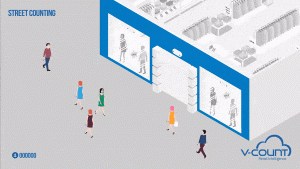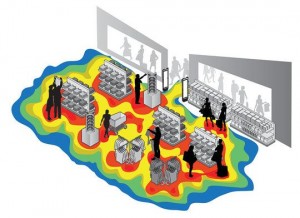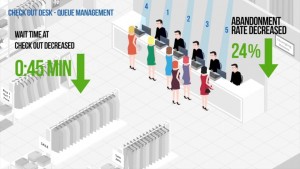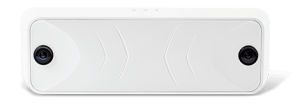Miami Beach, Florida Aug 16, 2019 (Issuewire.com) - E-commerce stores use online activity to analyze customer behavior and predict what they want. They combine user preference and browser cookies with other analytics to provide their customers with personalized shopping experiences. If you open a search tab for a desktop computer, they offer you deals on printers. When you add dress shoes to your cart, they give you a discount on socks that go perfectly with the shoes. They are always creating up-selling and cross-selling opportunities; always maximizing customer value.
To stay competitive with their online counterparts, brick and mortar retail stores have no choice but to delve into retail behavior analytics too. By understanding how customers behave in their stores, retailers can predict what the customers want. Giving the customers what they want and optimizing in-store operations will improve customer satisfaction, leading to increased patronage and more sales.
The key questions now are: what are the most important retail analytics for physical stores? Which data should be collected to make these analyses? How can stores collect and analyze said data? The answers are outlined below:
If you own or manage a retail store, these are the retail analytics you want to focus on. Optimizing these metrics will translate to better store performance, increased visitor traffic, and vastly improved sales.
1. Store draw-in rate
There’s a reason retail stores are mostly located close to the road. They aim to use good signage, attractive window displays, and the promise of good deals to attract passers-by. As a marketing strategy, this is as effective as any TV ad and it is much easier to optimize.
By measuring how many people walked past your store and how many walked in, you can measure the store’s draw-in rate. If the figure is too low, changes can be made to signage and window displays. Also, the promise of discounts has proven effective to increase draw-in rates for retail stores.
2. Conversion rate
This is the most important in-store retail metric by far. After successfully getting people to visit your store, the next step is to make sure they buy something. The average brick and mortar store has conversion rates between 20 to 30%. This means that for every 10 visitors, only 2/3 make purchases.
Measuring store conversion rate is easy. All you need to do is count the total number of visitors and compare the figure to your sales data. Some software enables stores to measure conversion rate automatically, making it easier to optimize it.
3. Lost sales opportunities
This metric tells you how many people were in the process of making a purchase, but for one reason or the other, changed their minds. The reason could be anything from long checkout lines to poor customer service or not finding an attendant to answer their questions. By reducing these occurrences to the minimum, you improve your store’s conversion rate and total sales.
4. Performance per section
This is important if you want to understand how customers behave in your store. Knowing the section that receives the most visitors is also vital for some other reasons.
One, you can maximize customer value by creating up-selling and cross-selling opportunities in these sections. Two, whenever you want to push a new product, that section is your best bet. And three, you can gradually replicate what works in that section for the rest of your store.
5. Staff-to-customer ratio
For retail stores, the goal is to have enough attendants to cater to all visitors during peak hours and maintain a small crew during off-peak hours. Optimal staff-to-customer ratio will reduce labor costs, increase conversion rate, and reduce lost sales opportunities.
Retail Analytics Solutions
The following tech solutions help retailers and retail stores to gather customer data and measure in-store analytics. They make it possible to measure and optimize the metrics highlighted above.
- People counting systems: People counting systems measure visitor traffic in a store automatically. They are also effective for street counting; this is important to measure draw-in rate. When combined with a business reporting tool, people counters provide information about a store’s conversion rate.
- Heatmap technology: Heatmap tracks the customer’s journey through your store. It tells you which section is the busiest and which products receive the most engagement. Heatmap data can also be used to improve store layout.
- Queue Management: This software alerts you when long lines are forming in your store. By deploying more attendants and reducing queues, you reduce lost sales opportunities and improve customer satisfaction.
- Mood, Age, and Gender (MAG) Recognition Technology: MAG organizes your visitors into different demographics. This provides insight into who your major customers are and which products will appeal to them. MAG can also be leveraged to create targeted adverts and in-store displays.
- Business Reporting Tools: A business reporting tool analyzes the data collected by the various retail software. Afterward, it provides in-store analytics, with reports outlining how customers behave in your store, why they behave that way and strategies you can implement to optimize important store metrics.
A manager that measures in-store analytics gains insight into visitor behavior and how to improve store operations to suit their needs. Take a look at all the important retail analytics above. Based on the listed metrics, how do you rate your store’s performance? If you have no means to measure them, look into procuring some of the retail analytics solutions. This is the first step in understanding your visitors and maximizing customer value.
Website : https://v-count.com
Media Contact
V-Count sales@v-count.com +971526 383111 429, 557 Lenox Ave, Miami Beach, FL 33139, USA https://v-count.com/













